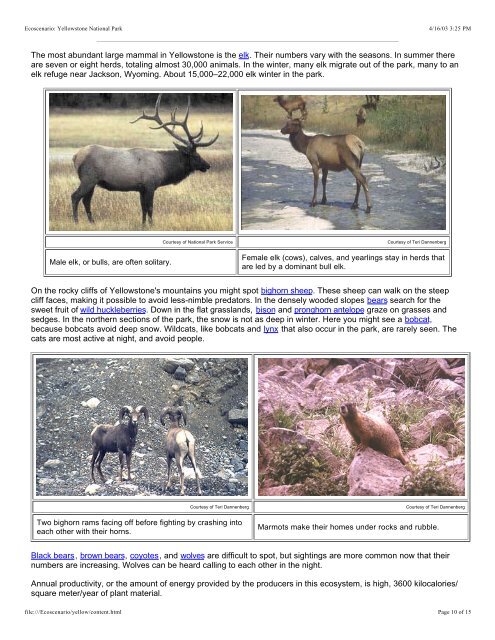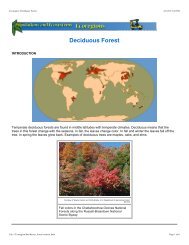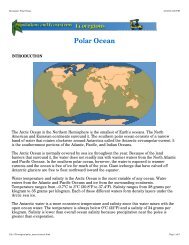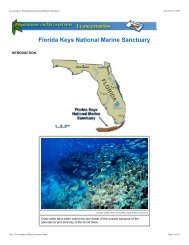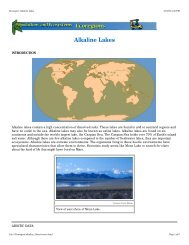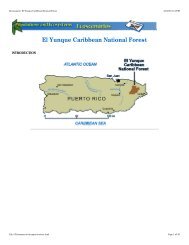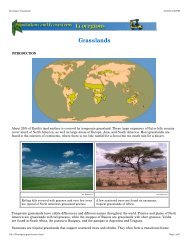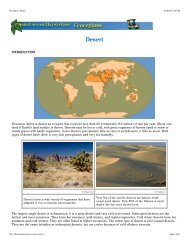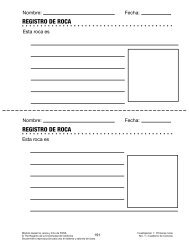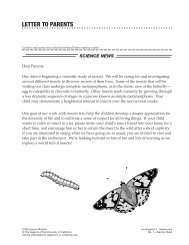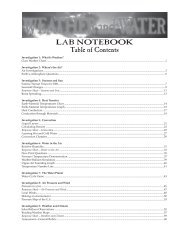Ecoscenarios Combined - FOSSweb
Ecoscenarios Combined - FOSSweb
Ecoscenarios Combined - FOSSweb
You also want an ePaper? Increase the reach of your titles
YUMPU automatically turns print PDFs into web optimized ePapers that Google loves.
Ecoscenario: Yellowstone National Park<br />
4/16/03 3:25 PM<br />
The most abundant large mammal in Yellowstone is the elk. Their numbers vary with the seasons. In summer there<br />
are seven or eight herds, totaling almost 30,000 animals. In the winter, many elk migrate out of the park, many to an<br />
elk refuge near Jackson, Wyoming. About 15,000–22,000 elk winter in the park.<br />
Male elk, or bulls, are often solitary.<br />
Courtesy of National Park Service<br />
Courtesy of Teri Dannenberg<br />
Female elk (cows), calves, and yearlings stay in herds that<br />
are led by a dominant bull elk.<br />
On the rocky cliffs of Yellowstone's mountains you might spot bighorn sheep. These sheep can walk on the steep<br />
cliff faces, making it possible to avoid less-nimble predators. In the densely wooded slopes bears search for the<br />
sweet fruit of wild huckleberries. Down in the flat grasslands, bison and pronghorn antelope graze on grasses and<br />
sedges. In the northern sections of the park, the snow is not as deep in winter. Here you might see a bobcat,<br />
because bobcats avoid deep snow. Wildcats, like bobcats and lynx that also occur in the park, are rarely seen. The<br />
cats are most active at night, and avoid people.<br />
Courtesy of Teri Dannenberg<br />
Two bighorn rams facing off before fighting by crashing into<br />
each other with their horns.<br />
Courtesy of Teri Dannenberg<br />
Marmots make their homes under rocks and rubble.<br />
Black bears, brown bears, coyotes, and wolves are difficult to spot, but sightings are more common now that their<br />
numbers are increasing. Wolves can be heard calling to each other in the night.<br />
Annual productivity, or the amount of energy provided by the producers in this ecosystem, is high, 3600 kilocalories/<br />
square meter/year of plant material.<br />
file:///Ecoscenario/yellow/content.html<br />
Page 10 of 15


